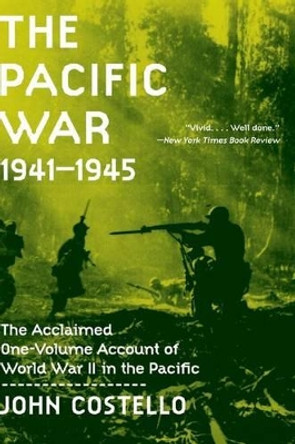Description
The concept of strategic initiative, in this analysis, helps to explain why and how contending powers design campaigns and use military forces to alter the trajectory of war. Judge identifies five factors that come into play in capturing and maintaining the initiative: resources, intelligence, strategic acumen, combat effectiveness, and chance, all of which are affected by political will. His book uses the dual campaigns in New Guinea and the Solomon Islands as a case study in strategic initiative by reconstructing the organizations, decisions, and events that influenced the shift of initiative from one adversary to the other. Perhaps the most critical factor in this case is strategic acumen, without which the other advantages are easily squandered. Specifically, Judge details how General Douglas MacArthur and Admiral Chester Nimitz, in designing and executing these campaigns, provided the strategic leadership essential to reversing the tide of war-whose outcome, Judge contends, was not as inevitable as conventional wisdom tells us.
The strategic initiative, once passed to American and Allied forces in the Pacific, would never be relinquished. In its explanation of how and why this happened, The Turn of the Tide in the Pacific War holds important lessons for students of military history and for future strategic leaders.
About the Author
Sean M. Judge (1971-2012) was a career US Air Force officer from 1993-2012. His publications include Who Has the Puck? Strategic Initiative in Modern, Conventional War.
Jonathan M. House, professor emeritus of military history at the US Army Command and General Staff College, is the author of Combined Arms Warfare in the Twentieth Century and coauthor of Stalingrad.
Reviews
The Turn of the Tide in the Pacific War is a valuable addition to the literature on strategy. The chapters on intelligence organizations in both the Japanese and US militaries are particularly useful in understanding Judge's explication of the concept of strategic initiative. Judge argues that strategic initiative is a concept that needs more formal study, and his case study here highlights how such a process can be accomplished while at the same time providing a gripping campaign analysis."" - John T. Kuehn, professor of military history, Army Command and General Staff College
""This insightful study shows how the tide really turned in the Japanese-American Pacific War. Reinforcing the role of contingency in shaping outcomes in the conflict that are too often seen as preordained, Judge reveals the combination of strategy and serendipity that allowed the Americans to finally seize the initiative that would lead to eventual victory."" - Conrad C. Crane, author of American Airpower Strategy in World War II: Bombs, Cities, Civilians, and Oil
""Sean M. Judge's The Turn of the Tide in the Pacific War sheds much-needed light on two important issues. He first provides analytical clarity concerning the much bandied-about concept of 'strategic initiative.' Then he puts it to good use by demonstrating how the campaigns for New Guinea and Guadalcanal were mutually supporting and turned the tide against the Japanese military. Judge's work demands a wide readership."" - Kevin C. Holzimmer, author of General Walter Krueger: Unsung Hero of the Pacific War
Book Information
ISBN 9780700625987
Author Sean M. Judge
Format Hardback
Page Count 296
Imprint University Press of Kansas
Publisher University Press of Kansas
Weight(grams) 613g









